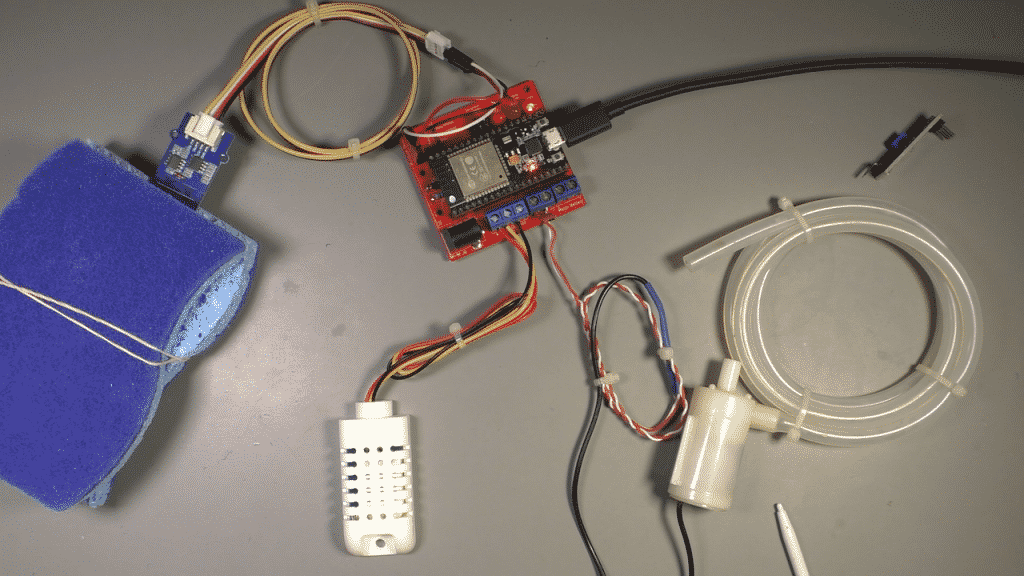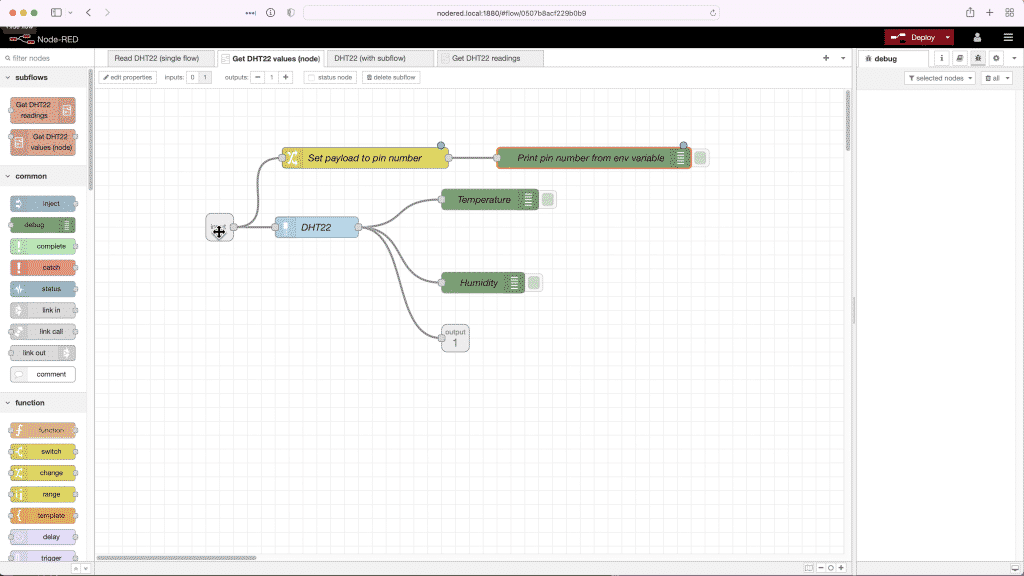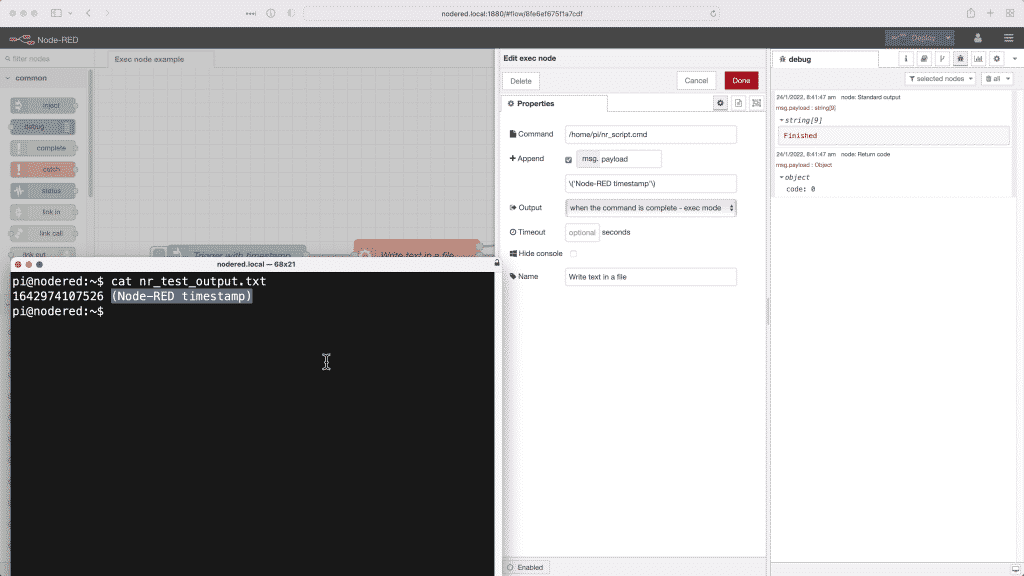We have updated our Node-RED and ESP32 project course with several new lectures.
The main impetus for this update is to bring the project up-to-date with Node-Red 2.1. This version of Node-Red was published in October 2021.
Of course, a couple of days after I finished the recordings for this update, Node-Red 2.2 was published (on January 27, 2022).
ARGH!!!
Another impetus for this update was a need to make it easier for the learner to work with the project hardware. Here’s a list of what’s new in this course update:
- Testing without the dirt.
- A small sensor hardware upgrade.
- How to upgrade your Node-Red instance to version 2.1.
- A review of what’s new in Node-Red 2.0 and 2.1, including demos of the most interesting new features.
Let’s drill into these updates.
Testing without the dirt
I originally designed this Node-Red project as a terrarium controller. I was not so much interested in the terrarium itself, but in the opportunity for creating a controller for a closed-loop system.
The problem with the terrarium is that it contains water and soil (let’s call it “dirt”). During the development, I experienced multiple accidents in which water from the reservoir overfilled the terrarium and flooded my workbench. I also didn’t like working with wet or dry dirt on my electronics bench.
In this update, I replaced the entire terrarium with a simulation. In this iteration I was only interested in being able to test that the sensors worked. So, I sandwiched the soil humidity sensor in two kitchen sponges, and added a bit of water. No more water spills or dirt on my workbench.

Sensor upgrade
In the first iteration of this project, I used a simple resistive soil sensor. This sensor is cheap and simple to use, but corrodes quickly and needs replacement.
In this iteration of the project, I replaced the resistive soil sensor with a Grove capacitive soil humidity sensor. It is slightly more expensive than the original, but corrosion-resistant so I expect it will last much longer. Only draw-back from this upgrade is that I have to re-design the sensor header on the breakout PCB to work with the Grove connector.
Node-Red 2 upgrade and demos
In the first iteration of this project, I used Node-Red version 1.1.1. The Node-Red development team follows an aggressive release plan that shadows the release plan of Node.js.
I will try to keep this project up-to-date for all major releases of Node-Red (for example, from version 1 to version 2, and from version 2 to version 3), and, as much as possible, for minor versions.
Node-Red 2.0 is a significant upgrade over Node-Red 1. It introduced new runtime and editor features, new nodes, a new debuggers, and lots of smaller improvements.
Node-Red 2.1 compounded on these updates with even more new editor features (my favorite is the ability to hide unused tabs), and node updates.

In this update, I show how to upgrade your Node-Red instance to version 2.1, and demonstrate how to use many of the new features and nodes.
Specifically:
- How to use the new Node-Red configuration wizard and settings file.
- Get an updated walk-through of the Node-Red editor.
- Learn about the new node groups.
- Learn about context stores.
- Learn about flow groups and environment variables.
- Learn about subflows and data exchange between flows and subflows.
- How to install and use the new flow debugger.
- Learn how to create projects, local and remotes, using Git and Github.
- How to use new nodes: Link In/Out/Call, Template, Exec.

This is a relatively comprehensive upgrade to the course. You will find the new lectures in sections 5 and the new section 18. If you are not enrolled, you can learn more about the course and enroll in the Node-RED and ESP32 course page.
